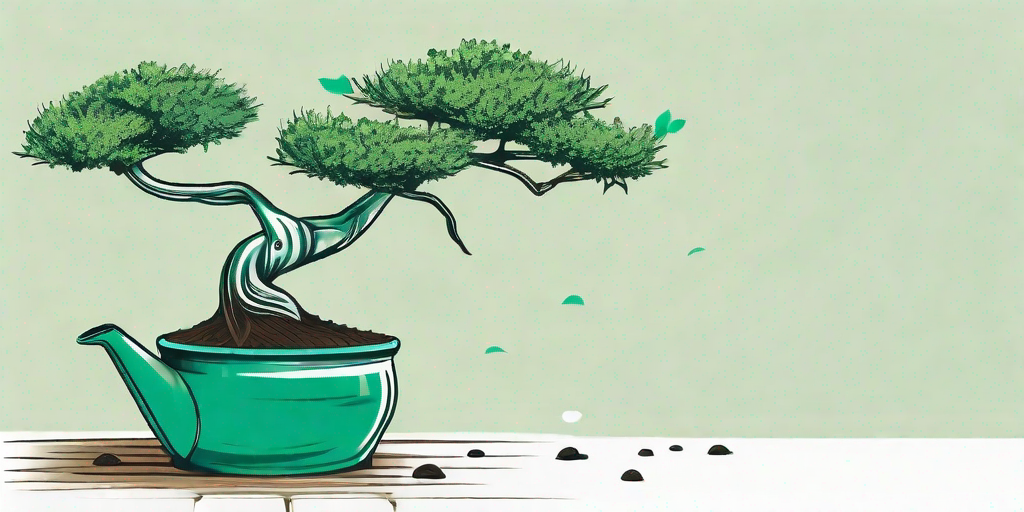
The bonsai tree is a symbol of patience, dedication, and the beauty of nature. These miniature trees are more than just a decoration; they are a hobby, a passion, and sometimes, a lifetime commitment. But what's the secret to their success? Well, my dear friends, it lies beneath the surface, in the humble soil. Yes, you heard it right! The perfect soil is the secret ingredient to a thriving bonsai tree. So, buckle up as we dig into the world of bonsai soil and unearth its mysteries.
The Importance of Soil in Bonsai Cultivation
Soil, for any plant, is like a home. It provides the necessary nutrients, water, and air that a plant needs to grow. But for a bonsai tree, the soil is more than just a home; it's a mini-ecosystem. It needs to be just right, not too dense, not too loose, with the perfect balance of nutrients. It's like the Goldilocks of soils.
Why is this so important? Because bonsai trees are grown in small pots, they don't have the luxury of spreading their roots out in search of nutrients. They rely heavily on the soil in their pot to provide everything they need. So, if the soil isn't up to scratch, your bonsai tree could be in for a rough ride.
Characteristics of the Perfect Bonsai Soil
Now that we've established the importance of soil in bonsai cultivation, let's get down to the nitty-gritty. What makes the perfect bonsai soil? Well, it's a combination of several factors.
Drainage
First and foremost, bonsai soil needs to have excellent drainage. Bonsai trees don't like to have wet feet, and sitting in waterlogged soil can lead to root rot, a deadly disease for any plant, let alone a bonsai tree.
So, how do you ensure good drainage? By using coarse particles in your soil mix. This allows water to flow through the soil easily, preventing it from becoming waterlogged.
Aeration
Just like us, bonsai trees need to breathe. And they do this through their roots. Therefore, the soil needs to be airy enough to allow oxygen to reach the roots. Again, coarse particles can help with this, creating spaces in the soil for air to circulate.
But be careful not to make the soil too loose. If the soil is too airy, water will flow through it too quickly, and the tree won't have time to absorb the water it needs.
Nutrient Retention
Last but not least, the soil needs to be able to retain nutrients. Bonsai trees need a steady supply of nutrients to grow and thrive. If the soil can't hold onto these nutrients, they'll just wash away every time you water your tree.
So, how do you achieve this delicate balance of drainage, aeration, and nutrient retention? By using a mix of different soil components, each with their own unique properties.
The Ideal Bonsai Soil Mix
There's no one-size-fits-all solution when it comes to bonsai soil. The ideal mix will depend on the type of tree you're growing, the climate you live in, and your own personal preferences. However, there are some common components that are often used in bonsai soil mixes.
Akadama
Akadama is a type of clay soil that's commonly used in bonsai cultivation. It has excellent drainage and aeration properties, and it's also great at retaining nutrients. However, it can break down over time, which can lead to poor drainage. So, it's often mixed with other components to improve its longevity.
Pumice
Pumice is a type of volcanic rock that's often used in bonsai soil mixes. It's lightweight, porous, and excellent at retaining water and nutrients. Plus, it doesn't break down over time, making it a great long-term addition to your soil mix.
Lava Rock
Lava rock, another volcanic product, is also a popular choice for bonsai soil. It's excellent at providing drainage and aeration, and it also adds a bit of weight to the soil, which can help prevent your bonsai tree from toppling over.
These are just a few examples of the components you can use in your bonsai soil mix. The key is to experiment and find the mix that works best for your tree.
FAQs
- Can I use regular potting soil for my bonsai tree?
- While it's possible to use regular potting soil for your bonsai tree, it's not recommended. Regular potting soil tends to be too dense and doesn't provide the drainage and aeration that bonsai trees need.
- How often should I repot my bonsai tree?
- This will depend on the type of tree and the size of the pot, but generally, bonsai trees should be repotted every two to five years.
- Can I make my own bonsai soil mix?
- Absolutely! In fact, many bonsai enthusiasts prefer to make their own soil mix so they can tailor it to their tree's specific needs.
Conclusion
So, there you have it, folks! The secret to perfect soil for your bonsai tree. It's not rocket science, but it does require a bit of knowledge and experimentation. But don't worry, with a bit of patience and dedication, you'll be a bonsai soil expert in no time!
Remember, the perfect soil is the foundation of a healthy, thriving bonsai tree. So, don't skimp on the soil. Your bonsai tree will thank you for it!















